Managing Pests and Disease In The Garden
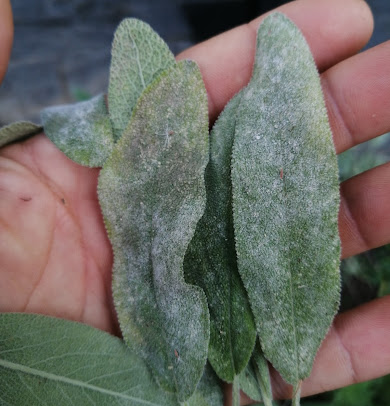
Pests and diseases are something every gardener encounters at some point in their gardening career. Even those with the richest soils and best practices can’t avoid the inevitable occurrence of pesky critters and sickness. Yet, what often separates a skilled gardener from a novice is the ability to react to these issues and prevent massive losses due to them.
In fact, in a healthy organic setting pests and diseases will be present, but they’ll be kept in check by a healthy ecological balance. Gardeners may also take direct action and change the environmental settings of the plants or even apply natural organic products that can help deter these problems.
Why Do Pests and Disease Occur?
- Environmental Settings and Plant Health: The most common reason why plants have pests is because the environmental conditions don’t favor the plant’s health. Just like animals, plants have immune systems that can help fend off illness. If your plants aren’t healthy they are highly susceptible to being effected by insects or disease.
This can often occur when planting at the wrong time of the season or when growing plants outside of their ideal climatic conditions. Inadequate soil conditions (pH, fertility, moisture content, texture, gas exchange, soil microbiome) can also be responsible. Too much or too little sunlight, water, and airflow through plant and vegetation can also lead to increased susceptibility.

- Lack Of Ecological Balance: The plants we cultivate in gardens originally evolved in diverse natural ecosystems filled with many different plants, insect, animals, and microbial species. While these ecosystems definitely included the pests and diseases that affect the plants in question, they also contained organisms such as the predators of said pests.
This lack of ecological balance is particularly exacerbated when planting large quantities of single plant species within proximity, such as is the case with monoculture farms. In these cases, populations of pests and diseases can easily explode into large numbers and easily infect all the plant species.
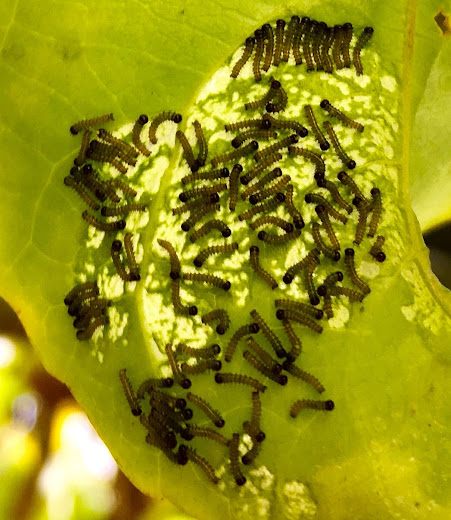
- They Just Happen: Many gardeners always like to point fingers at the reasoning behind why plants and diseases occur, but it appears that sometimes they just happen. They can be introduced to your garden by bringing in infected plant species or they may just wander in from a neighboring garden.
Managing Pests and Disease
While the best thing you can do to promote resilience against pests and disease is providing adequate environmental conditions for plant health, there are other practices gardeners can use to remedy issues once it’s too late to prevent them. This may include manipulating the growth environment (via pruning, soil amendments, and transplanting but also via the application of insecticides, fungicides, and other similar additives.
While these sorts of agricultural additives are often criticized due to health concerns and environmental impacts, there are safe and natural options you can add with little to no risk. Organic pesticides can be made at home with simple ingredients while others must be purchased from specialized producers.
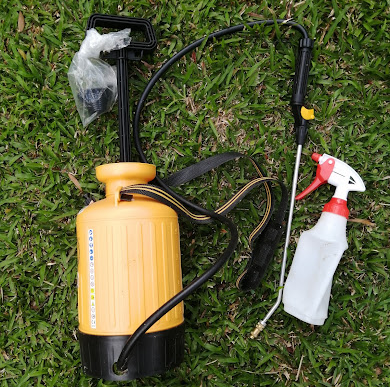
Natural Ways To Treat and Prevent Pests/Disease
Trichoderma
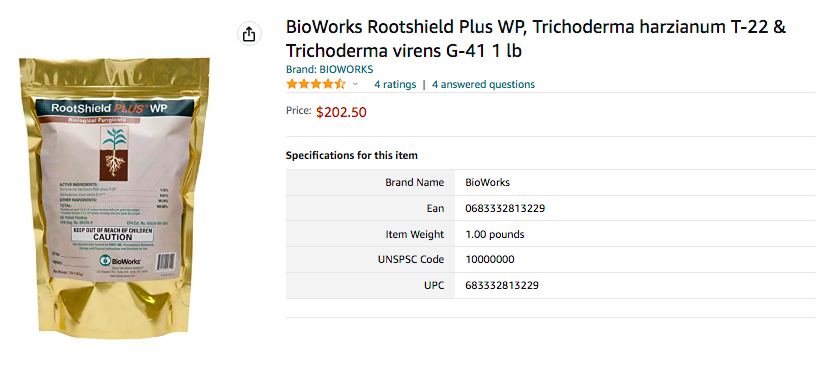
- Helps Against: Fungal diseases like Fusarium (wilts), Rhizoctonia (root rot), Sclerotinia (blight), Pythium, and Phytophthora (damping off).
- Description: Trichoderma is a fungus that attacks other fungi. It forms a symbiosis with plants which often host this beneficial fungus in their tissues. Trichoderma can be purchased, mixed with water, and applied as a foliar spray. Apply Trichoderma 1-3 times a week (or more if necessary) as a preventative or to help reduce the incidence of fungal disease. Trichoderma also improves plant health, nutrient absorption, and photosynthetic efficiency.
Lady Bugs
- Helps Against: Aphids, mites, scale insects, and other insect pests.
- Description: We are all familiar with charismatic ladybugs but not everyone knows how beneficial they can be in the garden. They are predatory insects who often feed on other insects who act as pests on cultivated plants. While they do occur naturally in healthy environments, ladybugs can also be purchased by the hundreds. In large numbers, Lady Bugs can effectively help bring down the numbers of insect pests to a manageable and balanced level.
Bt – “Bacillus thuringiensis“
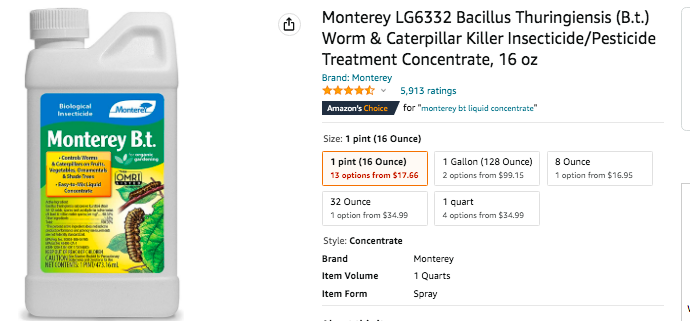
- Helps Against: Caterpillars, beetle larvae, and pests fly.
- Description: Bt is a microorganism that attacks insect pests in the garden. It is widely used in organic agriculture and can be applied with no ill effects on the health of the consumers and other beneficial insects. Can be applied 1-3 times a week or as directed.
Diatomaceous Earth

- Helps Against: Insect pests such as slugs, aphids, flies, caterpillars, vine weevils, and more.
- Description: Diatomaceous earth is a mineral powder that is composed of the exoskeletons of ancient marine algae called diatoms. It has a unique composition that cuts and damages soft tissues of many different insects. This not only makes the insects susceptible to diseases but also causes them to dry out or die from physical trauma. It can be applied directly on plant tissues or in the soils surrounding your plants. It is one of the favorite options to repel slugs who may directly feed on fruits. Diatomaceous earth should be applied after rain or watering which may wash it down into the soil profile. Always wear a mask when handling or applying diatomaceous earth to avoid inhaling it.
Neem Oil
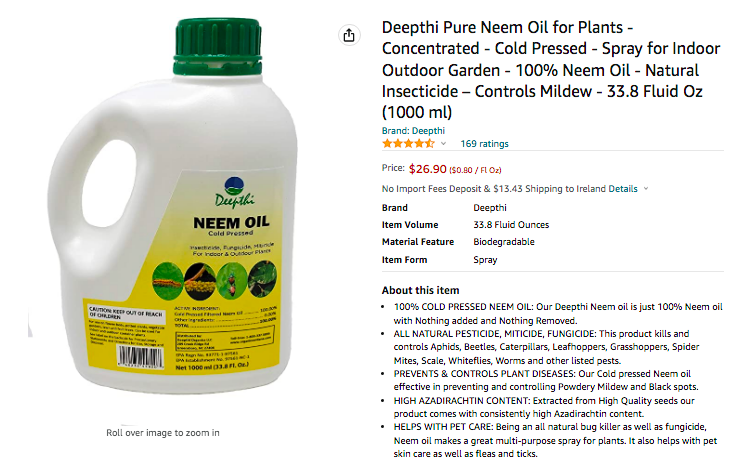
- Helps Against: Aphids, beetles, caterpillars, spider mites, white flies, and other insects. Also helps prevent and control fungal diseases like powdery mildew and black spots.
- Description: Neem oil is one of the most famous and highly regarded natural pesticides. It’s highly effective against a wide variety of pest species but also has antifungal properties that helps plants overcome infections from some of the harshest and most common plant diseases. Read product description before applying. Pure neem oil should be diluted at a ratio of 5ml of neem oil to 1L of water with a couple drops of liquid dish soap.
Soapy Water
- Helps Against: Aphids, mealybugs, whiteflies, spittlebugs, slugs, and other insect pests.
- Description: Soapy water is an easy way to control insect pests and doesn’t require you to purchase anything new. While it may not be effective as some of the other products mentioned, it can be effective if regularly applied. You want to dilute about 2 tablespoons of liquid dish soap per gallon of water and place this into a spray bottle. Apply every day or as often as possible.
Conclusion
Dealing with pests and disease in your garden or farm can be stressful. After many hours of work, time, and money, losing your cherished plants can be devastating.
Yet if this happens you shouldn’t lose motivation. Figuring out how to treat and prevent this from happening can be satisfying and hold many lessons for how to garden. If you’ve diversified your garden, you’ll see that many plants thrive without any issues. Sometimes just figuring out what works best in your climate, soils, and specific context can be the best way to prevent these issues. Talking with other local gardeners or farmers can also be a great way to gain insights on managing pests and disease.
Just remember to not lose hope and take every failure as a lesson for next season!
